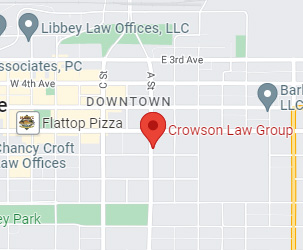Non-Injury Claims: NEID Claims

An individual may file a personal injury claim even without having any actual physical injuries. One category of such personal injury claims is that of negligent infliction of emotional distress claims. This article will present what negligent infliction of emotional distress claims elements involved and the rules associated with negligent infliction of emotional distress.
Negligent infliction of emotional distress claims are also known as NIED. These claims are a unique type of personal injury claim, where the plaintiff demands compensation for emotional distress, even when no physical injury occurred. Therefore, NIED is a personal injury claim that arises when one person acts so carelessly, that he or she must compensate the injured person for his or her mental or emotional injury.
In a NIED claim, the defendant’s negligence is said to have caused the plaintiff emotional or mental harm. Emotional harm damages are a part of most personal injury claims. NIED is unique, however, in that it allows the plaintiff to claim without any other personal injury claims being a part of the lawsuit. This is very different from the typical emotional distress damages that are part of larger personal injury claims which are associated to a physical injury. As a result, a NIED claim is likely to become a claim simply for ‘hurt feelings’, thus there are requirements that must be fulfilled for a successful NIED claim:
- The defendant’s conduct must have caused some kind of physical contact or impact, no matter how minor.
- The plaintiff must have been in the ‘zone of danger’ of the defendant’s negligent act.
- It must have been foreseeable that the defendant’s negligent conduct would have caused the plaintiff the emotional harm.
There are a number of variations of the first and second requirements, depending on the state where the claim has been filed. With respect to the second requirement, most states require that the plaintiff’s emotional harm be so severe, that it causes some kind of physical symptoms or physical manifestations.
The three requirements put forward require three rules to be observed for the claim to be valid. These three rules are:
- The impact rule – this rule simply requires that something, anything contacted or impacted the plaintiff as a result of the defendant’s negligent act. This could even be a pebble or the percussive effect of an explosion. All the while, the defendant’s act must still be negligent, it is only the impact that can be minor.
- Zone of danger rule – this requires that the plaintiff was close enough to the defendant’s negligent act to risk immediate physical harm. This rule limits a NIED claim to emotional harm based almost exclusively on ‘fear of injury’.
- Foreseeability rule – this is followed by the majority of states. Foreseeability is a requirement in all standard negligence cases, whereby a defendant must have been able to predict reasonably that his or her actions could result in the negative consequences experienced by the plaintiff.
For a non-injury car accident lawyer contact a law firm of renowned professionals.


